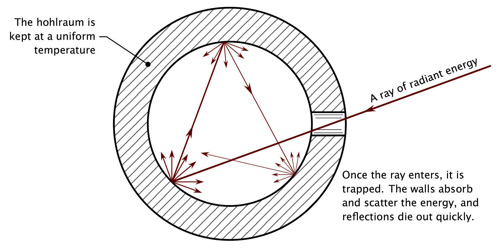The world around us is full of colors and contrasts, but what if we could create a material that absorbs so much light that it appears completely black? Such a material does exist, and it's called Vantablack. Developed by British company Surrey NanoSystems, Vantablack is made up of vertically-aligned carbon nanotubes that can absorb up to 99.965% of visible light. It has become the gold standard for dark materials, but it's not the only one out there. In this blog post, we'll explore the properties and applications of Vantablack, as well as other dark materials.
Vantablack was developed by a company called Surrey NanoSystems, which is based in the UK. The material was created by a team of scientists led by Dr. Ben Jensen, who founded Surrey NanoSystems in 2006.

Jensen had previously worked at the Defense Science and Technology Laboratory in the UK, where he had developed a range of advanced materials for military applications. In 2006, he founded Surrey NanoSystems with the goal of creating new, advanced materials for a variety of applications.

One of the materials that Jensen and his team set out to create was a material that could absorb as much light as possible. They began experimenting with carbon nanotubes, which are incredibly thin tubes made from carbon atoms. These tubes are just a few nanometers in diameter, but they can be incredibly long – up to several centimeters in length.
By arranging these nanotubes in a forest-like structure, Jensen and his team were able to create a material that was incredibly good at absorbing light. When light enters the structure, it is absorbed by the nanotubes and bounced around until it is eventually absorbed by the walls of the tubes themselves. This means that the material can absorb up to 99.965% of visible light, making it the darkest material currently known.

The development of Vantablack was a major breakthrough for Surrey NanoSystems, and the material quickly gained attention from scientists, artists, and designers around the world. It has been used in a variety of applications, from satellite imaging to military camouflage to architecture and art.


However, the manufacturing process for Vantablack is complex and expensive, and the material can only be applied to certain types of surfaces. Additionally, it is extremely fragile and can be easily damaged if it's not handled properly. Despite these limitations, Vantablack remains one of the most impressive materials currently known, and researchers are continuing to explore new ways to create even darker and more versatile materials.
-
What is Vantablack? Vantablack is a material made up of carbon nanotubes that are aligned vertically. These nanotubes are incredibly thin - just a few nanometers in diameter - and are arranged in such a way that they trap and absorb light, rather than reflecting it. The name "Vantablack" stands for "Vertically Aligned Nanotube Array black" and was developed by Surrey NanoSystems in 2014. Since then, it has become the darkest material known to man.
-
How does Vantablack work? The carbon nanotubes that make up Vantablack are arranged in such a way that they form a "forest" of tiny, closely-spaced tubes. When light enters this forest, it is trapped and bounced around between the tubes, eventually being absorbed by the walls of the tubes themselves. Because the nanotubes are so thin, they can absorb light across a broad spectrum of wavelengths, from ultraviolet to infrared. This means that Vantablack can be used in a variety of scientific and engineering applications where the ability to absorb light is important.
-
Applications of Vantablack: Vantablack was originally developed for use in satellite imaging, where it could help reduce stray light and improve the clarity of images. It has since been used in a variety of other applications, including:
- Astronomy: Vantablack can be used to reduce stray light in telescopes and other optical instruments, improving their sensitivity and accuracy.
- Military: Vantablack can be used to reduce the visibility of military equipment, making it harder for enemies to detect and target.
- Architecture: Vantablack can be used to create unique, eye-catching architectural designs that play with light and shadow.
- Art: Several artists have used Vantablack in their works, creating striking pieces that play with light and perception.
-
Other dark materials While Vantablack is the darkest material currently known, there are other materials that come close. For example, Musou Black is a pigment made from bamboo charcoal that absorbs up to 99.4% of visible light. Black 3.0 is a super-pigmented acrylic paint that reflects very little light, creating an effect similar to Vantablack. Aerogel is a low-density material that reflects very little light, making it appear nearly transparent.
-
Limitations of Vantablack While Vantablack is an impressive material, it's not without its limitations. One of the biggest challenges with Vantablack is that it is incredibly difficult to work with. The manufacturing process is complex and expensive, and it can only be applied to certain types of surfaces. Additionally, Vantablack is extremely fragile and can be easily damaged if it's not handled properly. Because of these limitations, researchers and engineers are always looking for new ways to create darker and more versatile materials.
-
Future of dark materials As technology continues to advance, it's likely that we'll see even more impressive dark materials in the future. Researchers are experimenting with different types of nanotubes, as well as other materials like graphene and metal alloys, to create new materials with even greater light absorption capabilities. These materials could have a variety of applications, from military camouflage to solar energy harvesting.
Let's take a look at the top 5 dark materials:
-
Vantablack: As mentioned earlier, Vantablack is currently the darkest material known to man, capable of absorbing up to 99.965% of visible light. It was developed by Surrey NanoSystems in the UK and is made from an array of carbon nanotubes.
-
Musgravite: This is a rare mineral that was discovered in 1967 in the Musgrave Ranges of South Australia. It is considered to be one of the rarest gemstones on Earth, and it has a very low refractive index, which means that it reflects very little light.
-
Black silicon: This is a type of silicon that has been etched with nanoscale features that trap light and prevent it from reflecting back out. Black silicon is used in a variety of applications, including solar cells and imaging sensors.
-
Carbon nanotube forest: Similar to the carbon nanotubes used to create Vantablack, a "carbon nanotube forest" is a highly-ordered array of nanotubes that can absorb up to 99.9% of visible light. It has potential applications in energy harvesting, photodetection, and optical sensing.
-
Black acrylic paint: While not as dark as the other materials on this list, black acrylic paint is one of the darkest materials that can be easily obtained by consumers. It absorbs up to 94% of visible light and is used in a variety of applications, including painting and artistic endeavors.
It's worth noting that the darkness of a material can depend on a variety of factors, including the wavelength of light being absorbed and the way in which the material is applied or manufactured. As such, the exact ranking of the darkest materials can vary depending on the specific criteria being used.
| Material | Composition | Absorption (visible light) | Manufacturing method | Applications |
|---|---|---|---|---|
| Vantablack | Carbon nanotubes | 99.965% | Chemical vapor deposition | Space, defense, art, optics, architecture |
| Musgravite | Boron-silicate | Unknown | Natural occurrence | Rare gemstone |
| Black silicon | Silicon | 98-99% | Plasma etching | Solar cells, imaging sensors |
| Carbon nanotubes | Carbon | Up to 99.9% | Chemical vapor deposition | Energy harvesting, photodetection, optical sensing |
| Black acrylic paint | Acrylic | Up to 94% | Brush or spray painting | Painting, artistic endeavors |
The table includes columns for the composition of each material, the percentage of visible light that it absorbs, its manufacturing method, and its potential applications. It's important to note that the absorption rates listed here are not absolute, as they can vary depending on the specific wavelength of light being absorbed and other factors. Additionally, the applications listed here are not exhaustive, as these materials may have potential uses in a variety of industries and fields.
Bonus, here are some fun facts about the top 5 darkest materials:
-
Vantablack is so dark that it can make objects appear two-dimensional. When an object is coated in Vantablack, it becomes difficult to perceive its shape or depth, as all of the shadows and highlights are absorbed by the material.
-
Musgravite was named after the location where it was discovered, the Musgrave Ranges in South Australia. The ranges are also home to a number of other rare and valuable minerals, including opal, zircon, and garnet.
-
Black silicon is sometimes called "moth-eye" silicon, because its texture resembles the eyes of certain moth species. The nanoscale features etched into the silicon surface resemble a series of tiny pyramids, which trap light and reduce reflectivity.
-
Carbon nanotube forests are named for their appearance, which resembles a dense forest of tiny trees. The nanotubes are grown in a highly-ordered array using chemical vapor deposition, and can be manipulated to create a variety of shapes and structures.
-
Black acrylic paint is often used by artists to create dramatic contrast in their works. The paint absorbs a high percentage of visible light, which can make the colors and shapes in a painting appear more intense and vivid.
Conclusion, the study of the darkest materials on earth has been an ongoing area of research for scientists and engineers. These materials have numerous practical applications, including in space, defense, art, and architecture, as well as in energy harvesting, photodetection, and optical sensing. The discovery of Vantablack, which is currently the darkest material known to man, has pushed the boundaries of what we thought was possible in terms of light absorption. However, there are many other dark materials out there, each with their own unique properties and potential uses. As technology continues to advance, it will be interesting to see what new and innovative materials are developed in the future.
Discover More
Most Viewed
Christmas is a season of joy, love, and traditions. And what better way to get into the holiday spirit than through timeless carols? These musical gems have been bringing people together for generations. Here’s our ranked list of the Top 10 Christmas Caro…
Read More
















